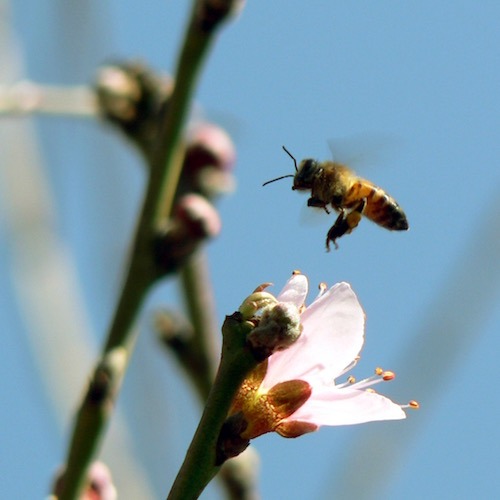Celebrate Pollinator Week
There is so much to this intricate, beautiful system we call life.
In recent years, pollinator communities within our ecosystems have been at threat of extinction, we especially hear about the bumblebee. But did you know that there are several other types of pollinators at risk? For instance, there has been a 90% decline in Monarch populations in recent years and all hummingbird species are considered vulnerable or endangered primarily due to habitat loss and destruction.
Here’s a bit of ecology science 101 to get the conversation going (and for all of us who may have missed this lesson at school).
What is pollination?
Pollination occurs when pollen is moved within flowers or carried from flower to flower by pollinating animals such as birds, bees, bats, butterflies, moths, beetles, or other animals, or by the wind. (www.pollinator.org)
What does pollination do?
The transfer of pollen in and between flowers of the same species leads to fertilization, and successful seed and fruit production for plants. Pollination ensures that a plant will produce full-bodied fruit and a full set of viable seeds. (www.pollinator.org)
What threatens pollinators?
There are many threats to their survival including habitat loss, chemical use such as pesticides and herbicides, climate change, spread of pests and diseases and a lack of enough diverse pollen and nectar rich flowers to feed on. (www.pollinator.org)
Why is pollination important?
- Pollinators are vital to humans and our planet.
- 1 in 3 bites of food we eat is courtesy of insect pollination.
- 85% of flowering plants depend on pollinators for reproduction.
- Worldwide, approximately 1,000 plants grown for food, beverages, fibers, spices, and medicines need to be pollinated by animals in order to produce the goods on which we depend.
- Foods and beverages produced with the help of pollinators include: apples, blueberries, chocolate, coffee, melons, peaches, potatoes, pumpkins, vanilla, almonds, and tequila.
(www.pollinator.org, www.beecitycanada.org)
What can we do?
Although this is a global issue we can scale it down to size and make a difference. There are plenty of local and national associations spreading awareness and educating the public on things we can do to help restore this vital part of the food chain. Simple, affordable things that can make a huge impact, for example, planting milkweed plants to support monarch populations.
Monarchs cannot survive without milkweed; their caterpillars only eat milkweed plants, and monarch butterflies need milkweed to lay their eggs. With shifting land management practices, we have lost much milkweed from the landscape. Planting milkweed also helps other pollinators, because it provides valuable nectar resources to a diverse assortment of bees and butterflies. (www.monarchjointventure.org)
June 20 – 26, 2016 is National Pollinators week. National Pollinator Week is a time to celebrate pollinators and spread the word about what you can do to protect them. For additional information, check out the list of resources below.
Create a buzz – challenge your neighbours and friends to plant milkweed plants or host a work or community. I would love to hear about you’re doing to help our pollinators!
Laura Iamundo, Certified Holistic Nutritionist
Resources

